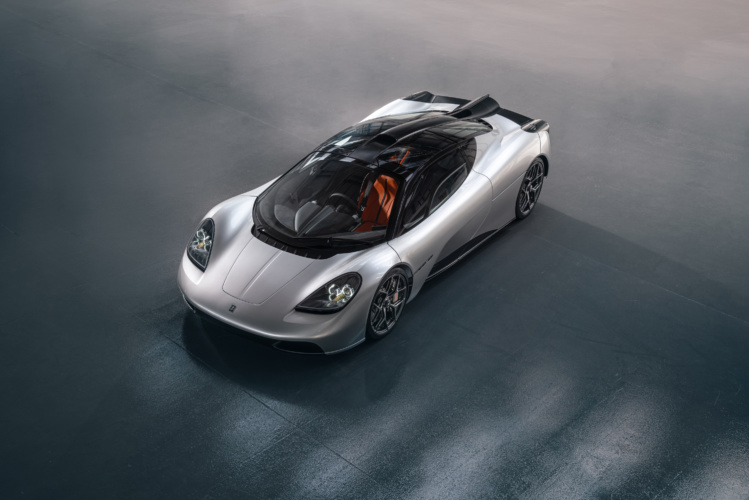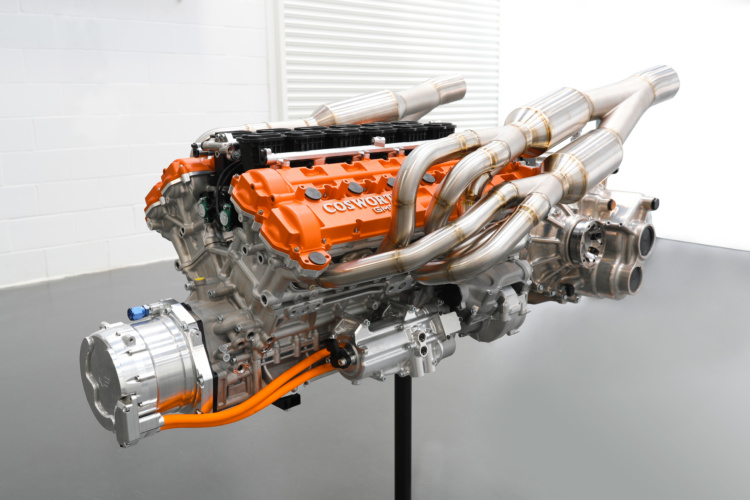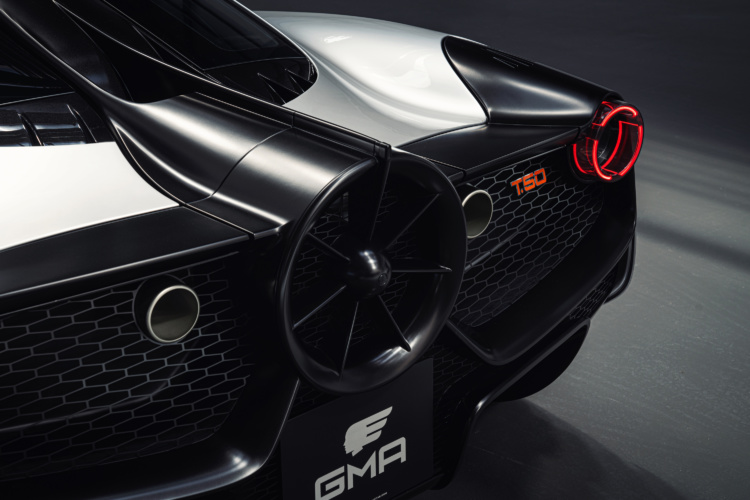Around a third lighter than other supercars, the 986kg car – which uses a specially developed fan to improve its aerodynamic performance - will enter production in January 2022.

The vehicle - described as a successor to Gordon Murray’s McLaren F1 of the 1990s, is the legendary engineer’s 50th car design.
At the heart of the vehicle is a bespoke 3.9 litre V12 Cosworth engine that is claimed to be the highest-revving and most responsive naturally-aspirated engine ever fitted to a production road car. The engine delivers maximum power (663PS) at 11,500rpm, on its way to a 12,100rpm, a record for a road car. At 178Kg it is also the lightest ever made.
Along with the manual Xtrac gearbox the engine is also a semi-structural element of the car and is attached using an inclined axis shear mounting system (IASA). Murray claims that this helps to provide much of the rigidity and weight saving found in a race car.
The engine sits on anti-vibration mounts to prevent unwanted noise and vibration entering the cabin, while enabling the effective management of braking, acceleration and cornering forces. This saves 25kg of chassis weight at the rear of T.50, compared to a traditional engine mounting system.
Murray claims that the light weight of the vehicle gives it unparalleled levels of agility, responsiveness and driver focus, and enables the car to be ‘alive’ at normal road speeds, not only when the revs climb past 10,000rpm.

Key to this is the use of high grade carbon fibre in the body and chassis, which together weigh under 150kg. The T.50’s lightweight carbon fibre monocoque - constructed by UK firm Formplex - features novel, cutting-edge part-bonded carbon fibre an aluminium honeycomb core. The exterior body panels - including the front clam, the sculpted doors and the car’s rear panels - are also constructed from carbon fibre.
The performance is further enhanced by a range of aerodynamic innovations, including a rear-mounted 400mm fan that accelerates air passing under the car, forcing it through active boundary-layer control ducts that form part of the rear diffuser. This is based on similar technology first introduced by Murray in the 1978 Formula 1 season.
The fan and its associated ducting system improve on conventional ground-effect systems by actively managing both underbody and overbody airflow. This boundary layer control ensures the most effective interaction of airflow on top of, and below the car, balancing drag and downforce at all speeds. This helps to increase downforce by 50%; reduce drag by 12.5%; add around 50PS to the car’s output, in combination with ram-air induction; and cut braking distance by 10m from 150mph.

The debt to F1 is further reinforced inside the cabin, where a ‘jet-fighter’ style central seating position affords an unhindered view out of the cabin, offering the type of driving experience usually associated with a single-seater race car layout.
“Everything about the interior starts with the driver – the central driving position is the clearest demonstration of this approach. Building on this starting point, every control is arranged within easy reach of the driver,” said Murray, who believes the driver experience will surpass that of any supercar ever built. “With 30 years of technological and systems advancement, now, the time is right to design the greatest analogue driver’s car,” he said. “I believe no other company could deliver what we will bring to market in 2022, producing this British supercar will be my proudest moment.”
The company plans to build 100 customer cars – at a cost of £2.36m each - at its Surrey production site.



Nanogenerator consumes CO2 to generate electricity
Whoopee, they've solved how to keep a light on but not a lot else.